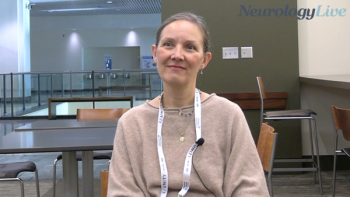
Increased Levels of Status Epilepticus Result in Worse Overall Outcomes, Higher Costs
Patients with highly refractory status epilepticus had greater median hospital length stays as well as greater median hospital costs compared to patients with moderate or low refractory status epilepticus.
Status epilepticus (SE) refractoriness is associated with a high level of burden, including increased mortality and costs that increase with disease refractoriness, according to a recently published cross-sectional study.1
Lead author Elan L. Guterman, MD, neurologist, University of California San Francisco, and colleagues examined differences in clinical outcomes and costs associated with 43,988 hospitalizations for SE of varying refractoriness. In total, there were 14,694 admissions (33.4%) for low refractory, 10,140 (23.1%) for moderate refractory, and 19,154 (43.5%) for highly refractory SE. Patients with SE demonstrated an overall in-hospital mortality rate of 11.2%, with the highest in-hospital mortality rate in the highly refractory SE group (18.9%) compared with the moderate (6.3%) and low (4.6%) refractory groups (P <.001 for all comparisons).
Median intensive care unit (ICU) length of stay (LOS) was 5 days (interquartile range [IQR], 2-10 days) and LOS increased with more refractory disease, with median LOS of 3 days (IQR, 2-5 days) for patients with low, 4 days (IQR, 2-8 days) for patients with moderate, and 8 days (IQR, 4-15 days) for patients with highly refractory SE.
"More effective delivery of existing SE treatments and the development of new therapies may have the potential to prevent SE from progressing to a more refractory state, which could substantially decrease the need for ICU care, lower LOS, and reduce the high clinical and economic burden for SE for patients and our health system,” Guterman et al wrote.
READ MORE:
Median total hospital cost was $13,201 (mean, $26,304 [standard deviation (SD), 45,048]) and per diem cost was $2806 (mean, $3291 [SD, 2434]). Patients with highly refractory SE represented the greatest costs, with a median total cost of $25,105 (mean, $41,858 [SD, 59,063]). In comparison, patients with low and moderate refractory SE had median costs of $6812 (mean, $11,532 [SD, 17,228]) and $10,592 (mean, $18,328 [SD, 30,776]). The investigators noted that the cost findings were seen in both the pediatric and adult subgroups when examined independently.
A composite of in-hospital mortality and discharge to hospice increased the aforementioned rates to 25.3% for highly refractory, 13.6% for moderate refractory, and 7.9% for low refractory (P <.001 for all comparisons). In total, 8919 patients (60.7%) with low refractory SE were discharged home, whereas 4504 patients (44.4%) had moderate refractory SE and 6598 (34.4%) had highly refractory SE. These findings remained similar in both the pediatric and adult groups when observed independently, although pediatric patients showed lower mortality rate and higher rates of discharge home overall.
Development of a hospital-acquired condition was observed in 8442 admissions (19.2%). Of them, 4418 patients (23.1%) had highly refractory SE, representing the highest proportion across each cohort. Urinary tract infection was the most common hospital-acquired infection, occurring in 7030 (16.0%) hospitalizations overall. Across the SE study population, meningoencephalitis (31%), hyponatremia (29%), ischemic stroke (29%), and intracerebral hemorrhage (26%) were the suspected causes with the greatest rates of hospital-acquired conditions.
Guterman has been involved in a number of research projects that include patients with SE. She recently led a cross-sectional analysis that
REFERENCES
1. Guterman EL, Betjemann JP, Aimetti A, et al. Association between treatment progression, disease refractoriness, and burden of illness among hospitalized patients with status epilepticus. JAMA Neurol. Published online April 5, 2021. doi: 10.1001/jamaneurol.2021.0520
2. Guterman EL, Sanford JK, Betjemann JP, et al. Prehospital midazolam use and outcomes among patients with out-of-hospital status epilepticus. Neurology. Published online September 17, 2020. doi: 10.1212/WNL.0000000000010913
Newsletter
Keep your finger on the pulse of neurology—subscribe to NeurologyLive for expert interviews, new data, and breakthrough treatment updates.


































